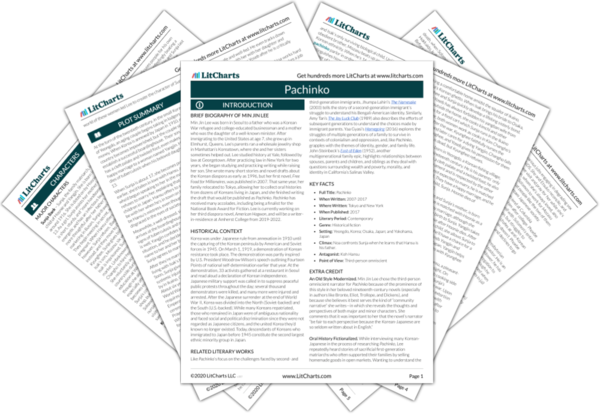AI ToolsNew
Tools to make learning and teaching easier
|
Previous
Book 3, Chapter 4
|
Pachinko: Book 3, Chapter 5 Summary & Analysis |
Next
Book 3, Chapter 6
|


Upgrade to unlock the analysis and theme tracking for all of PachinkoPachinko!
Get LitCharts A+